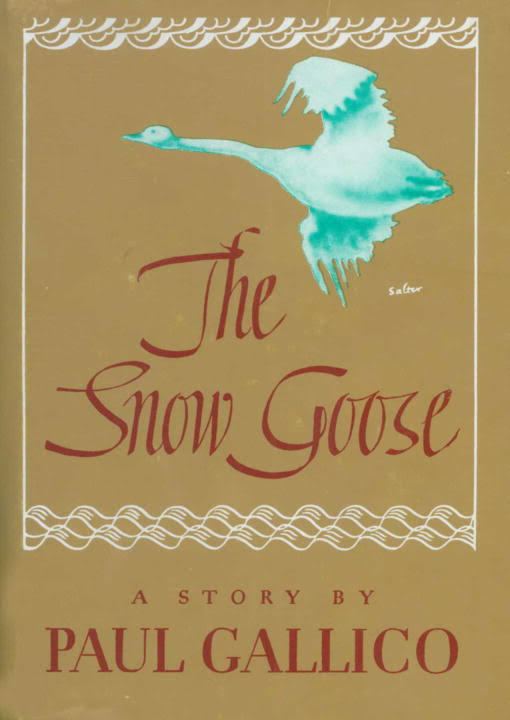8.2 /10 1 Votes
Originally published 1941 Nominations Kate Greenaway Medal | 4.1/5 Goodreads | |||||||||||||||||||||||||||||||||
 | ||||||||||||||||||||||||||||||||||
Genres Fiction, Children's literature Similar Paul Gallico books, Children's literature, English language books | ||||||||||||||||||||||||||||||||||
Laurence olivier in the snow goose a story of dunkirk 1954 radio drama
The Snow Goose: A Story of Dunkirk is a short novella by the American author Paul Gallico. It was first published in 1940 as a short story in The Saturday Evening Post, then he expanded it to create a short novella which was first published on April 7, 1941.
Contents
- Laurence olivier in the snow goose a story of dunkirk 1954 radio drama
- Plot summary
- Reception
- Popular culture
- Musical adaptation
- References
Plot summary
The Snow Goose is a simple, short written parable on the regenerative power of friendship and love, set against a backdrop of the horror of war. It documents the growth of a friendship between Philip Rhayader, an artist living a solitary life in an abandoned lighthouse in the marshlands of Essex because of his disabilities, and a young local girl, Fritha. The snow goose, symbolic of both Rhayader (Gallico) and the world itself, wounded by gunshot and many miles from home, is found by Fritha and, as the human friendship blossoms, the bird is nursed back to flight, and revisits the lighthouse in its migration for several years. As Fritha grows up, Rhayader and his small sailboat eventually are lost in the British retreat from Dunkirk, having saved several hundred men. The bird, which was with Rhayader, returns briefly to the grown Fritha on the marshes. She interprets this as Rhayader's soul taking farewell of her (and realizes she had come to love him). Afterwards, a German pilot destroys Rhayader's lighthouse and all of his work, except for one portrait Fritha saves after his death: a painting of her as Rhayader first saw her—a child, with the wounded snow goose in her arms.
Reception
The Snow Goose was one of the O. Henry Prize Winners in 1941.
Critic Robert van Gelder called it "perhaps the most sentimental story that ever has achieved the dignity of a Borzoi [prestige imprint of publisher Knopf] imprint. It is a timeless legend that makes use of every timeless appeal that could be crowded into it." A public library put it on a list of "tearjerkers". Gallico made no apologies, saying that in the contest between sentiment and 'slime', "sentiment remains so far out in front, as it always has and always will among ordinary humans that the calamity-howlers and porn merchants have to increase the decibels of their lamentations, the hideousness of their violence and the mountainous piles of their filth to keep in the race at all."
Popular culture
Musical adaptation
In 1975, the British progressive rock group Camel made an orchestrated instrumental album based on Gallico's novel, initially entitled The Snow Goose. Gallico threatened to sue the band for copyright infringement and therefore the band had to rename the title to Music Inspired by The Snow Goose. However, the album was a great success and established Camel, leading to a sell out performance with the London Symphony Orchestra at the Royal Albert Hall, London in October 1975. Camel toured Europe in late 2013 and early 2014, performing the album in its entirety for the first time since 1975. In 2014, readers of 'Prog' magazine voted it no. 31 in the Top 100 Prog Albums of All Time.
In 1976 RCA released an LP with music written and orchestrated by Ed Welch and Spike Milligan. Contributions were made by Harry Edgington and Alan Clare. The LP was produced by Stuart Taylor and Ed Welch for Quarry Productions Ltd with artistic direction from Spike Milligan. Paul Gallico's original story was adapted for this recording by Spike Milligan in Australia 1976. The music is published by Clowns Music Ltd. Spike Milligan provided the narration throughout. Virginia, the widow of Paul Gallico, co-operated with others in this project.
